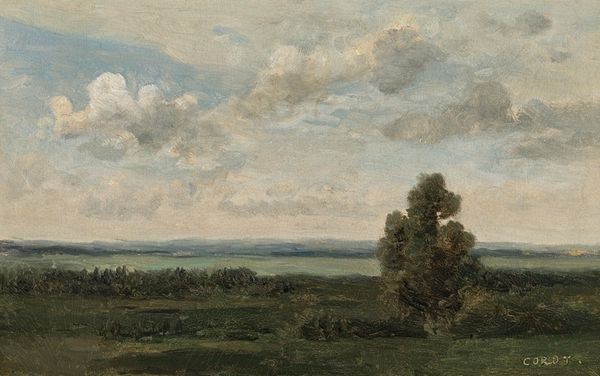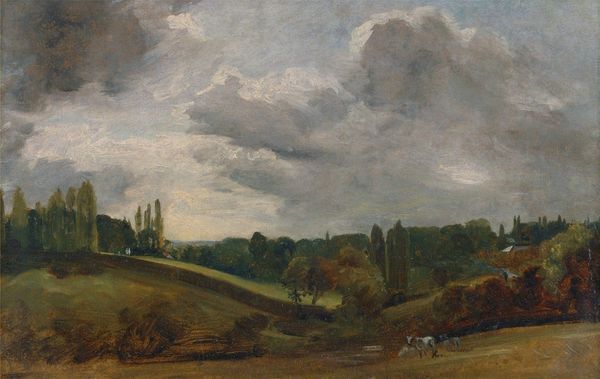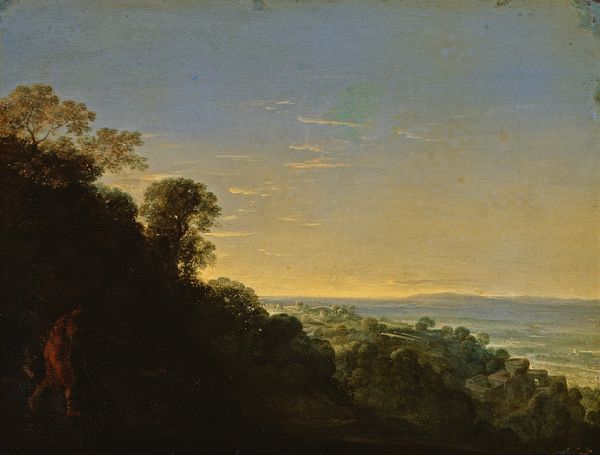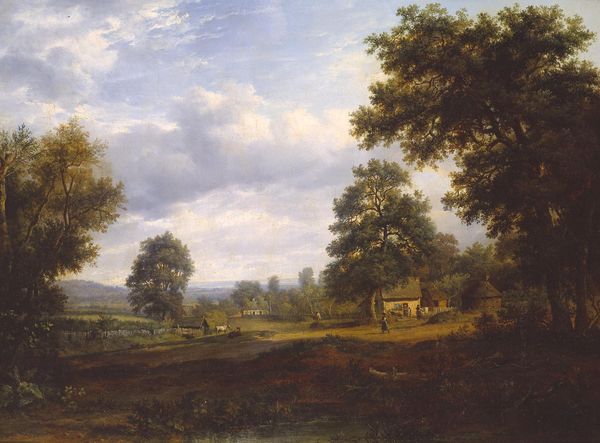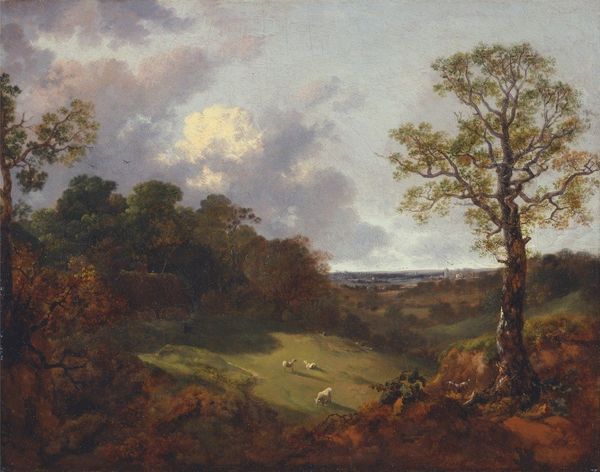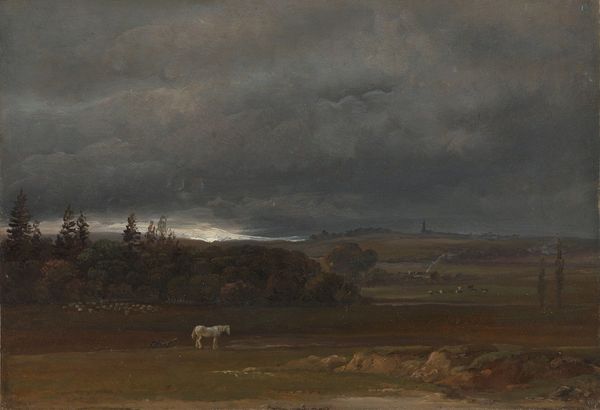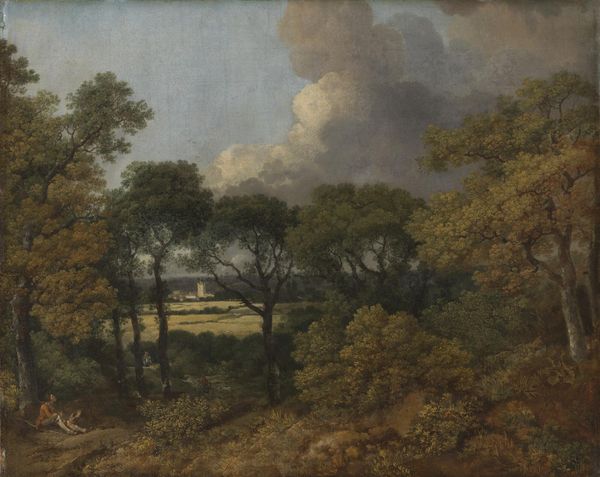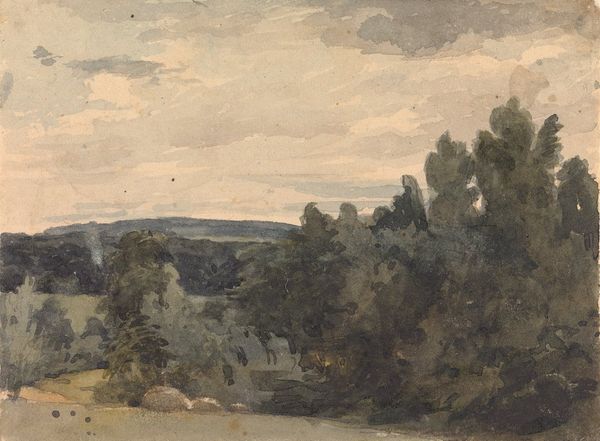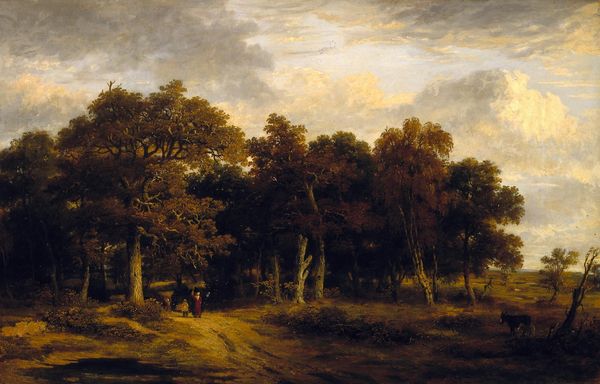
Landscape, Possibly the Isle of Wight or Richmond Hill 1815
0:00
0:00
plein-air, oil-paint
#
sky
#
plein-air
#
oil-paint
#
landscape
#
figuration
#
nature
#
oil painting
#
romanticism
#
cloud
#
natural-landscape
Copyright: Public domain
Curator: John Martin's oil-on-canvas work, dating from around 1815, invites us into a landscape believed to be the Isle of Wight or Richmond Hill, and offers a classic example of plein-air painting. Editor: The immediate feeling I get is one of looming drama. That sky – it dominates the canvas with its moody grays and whites, hinting at a brewing storm. There's an almost theatrical quality to the light breaking through. Curator: Indeed. It's a fine example of Romanticism, channeling the power of nature and the sublime. This period really saw a surge in landscape painting, where nature became this arena for expressing powerful emotions and experiences of freedom. But its place on view at Yale emphasizes the role of wealthy institutions in preserving and making accessible paintings like these to shape art historical discourses. Editor: The cloud formations really draw me in. Clouds are often associated with ephemerality, change, and the power of the divine. Notice how they interact with the landscape? It's not just background; it is like a living character in this piece. Those bursts of light piercing through signify a transition, possibly spiritual awakening or maybe impending disaster. Curator: It’s fascinating to consider the market for landscapes during this time. These scenes weren’t simply about picturesque views; they spoke to notions of British identity and control, reflecting societal power dynamics. It offered this sense of connection with their land while being accessible for those of higher classes. Editor: You are right, nature was at times seen as a divine space where spiritual growth was more reachable. You could see God in action. That makes me reflect also on the two small figures nearly obscured by trees in the foreground—almost as if humanity is at nature's mercy, a symbolic statement of scale and control. Curator: To look at Martin's painting now invites reflection on how ideas around nature and national identity have evolved. The landscape tradition he worked within certainly shifted across generations as people sought to come to terms with the increasing urbanization, industrialization, and, as such, exploitation of landscape as the industrial revolution rolled out. Editor: I walk away from it pondering the fleeting moment and our place within something greater. Curator: I am struck by how it represents not just a specific locale, but a complex cultural conversation about British identity.
Comments
No comments
Be the first to comment and join the conversation on the ultimate creative platform.
